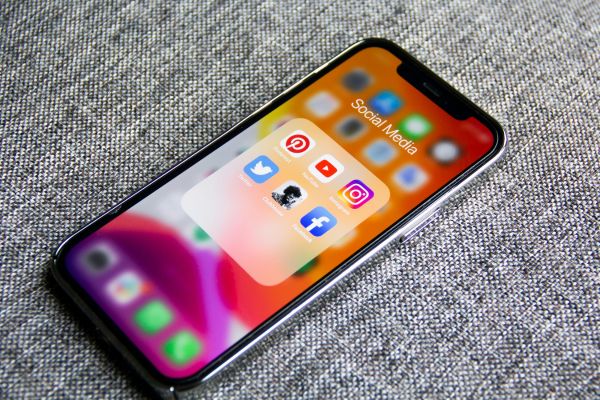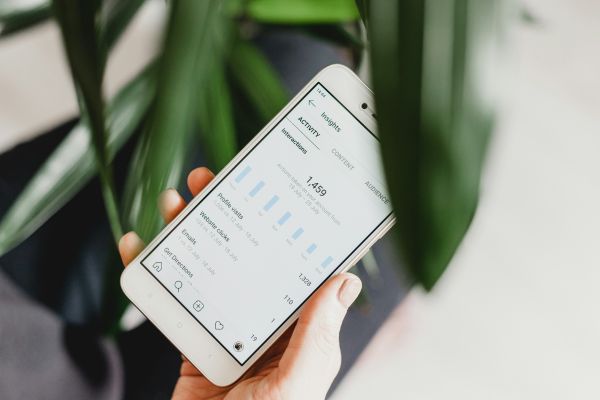Social media influencers shape trends, sway purchasing decisions, and build communities around shared interests. But what exactly defines an influencer, and how do they turn their online presence into a career? By sharing authentic experiences, reviews, and lifestyle updates, influencers create real connections with their audiences, making them powerful partners for brands and businesses.
In this complete guide, we’ll explore:
- Actionable tips to become one or collaborate with them effectively.
- What a social media influencer really is,
- How do they make money?
- Different types of influencers,

What is a Social Media Influencer?
A social media influencer is someone who has established a notable presence on platforms like Instagram, YouTube, TikTok, or others and is able to influence the opinions, behaviors, or purchasing decisions of their audience. While many people use social media to share moments or ideas, influencers often take a more strategic approach to building and maintaining a relationship with their followers.
Being a social media influencer typically involves a combination of content creation, audience engagement, and brand collaboration. Influencers typically specialize in a niche, whether it’s beauty, fitness, technology, travel, or business. Through consistent posting, storytelling, and genuine interaction, they earn the trust of their followers, turning that trust into real marketing power.
What Qualifies Someone as a Social Media Influencer?
There’s no fixed formula, but an individual is generally considered a social media influencer if they meet several of these criteria:
- Consistent audience engagement: Influencers don’t just have followers – they have an audience that responds. Engagement includes likes, comments, shares, and direct messages that show people are actively involved in the content.
- Credibility or niche authority: Influencers often build trust by focusing on specific areas such as fitness, fashion, finance, tech, or parenting. Their audience values their opinions in those areas and sees them as reliable sources of insight.
- Content with purpose: While influencers may share personal updates, much of their content is created with intent – whether that’s to inform, entertain, inspire, or promote.
- Audience size (relative to niche): Influence isn’t always about having millions of followers. Micro-influencers (10,000–100,000 followers) and even nano-influencers (1,000–10,000) can have a significant impact within tightly focused communities.
- Platform-specific strategy: Influencers often tailor their content strategy to fit each platform’s format and audience behavior. This shows an understanding of how social media algorithms and engagement patterns work.
Key Characteristics and Responsibilities
Being an influencer requires more than posting content occasionally. Here are some of the key responsibilities that often come with the role:
- Content planning and creation: Influencers regularly develop photos, videos, stories, and written posts that reflect their personal brand or align with campaign goals. Many follow content calendars and collaborate with editors or photographers.
- Audience interaction: Successful influencers take time to respond to comments, engage in direct messages, or even host Q&A sessions. This builds loyalty and strengthens trust.
- Brand collaborations and sponsorships: Many influencers partner with brands to promote products or services. This involves negotiating contracts, following campaign guidelines, and often creating disclosures in line with advertising regulations.
- Analytics and performance tracking: Monitoring metrics like engagement rate, reach, impressions, and follower growth is essential for understanding what works, and for showing value to potential brand partners.
- Reputation management: Influencers are often viewed as public figures within their communities. Managing how they are perceived and responding to criticism professionally is part of maintaining long-term influence.
Common Platforms Influencers Use
Each platform offers different tools and formats for engaging with audiences. The most common platforms for influencers include:
- Instagram – Known for visual storytelling, Instagram is popular for fashion, beauty, travel, and lifestyle influencers. Key features include Stories, Reels, and static posts.
- YouTube – Favored by creators producing longer-form content such as tutorials, product reviews, or personal vlogs. It’s widely used in niches like tech, education, and entertainment.
- TikTok – A platform centered around short-form video, often driven by trends, music, and humor. It’s popular among younger demographics and is growing rapidly across various industries. Check out our TikTok Influencers Marketing with Explanation and Strategies.
- Twitter (X) – Best suited for influencers in news, politics, or thought leadership. It’s more conversational and less visual than other platforms.
- LinkedIn – Increasingly used by professional influencers, particularly in business, leadership, marketing, and personal development spaces.
- Twitch – Primarily for gaming influencers, but also expanding into live commentary, music, and casual streaming.
Influencers typically focus on one or two platforms where their audience is most active, tailoring their content style and posting frequency accordingly.

Influencers vs. Content Creators – Is There a Difference?
These two terms are sometimes used interchangeably, but they refer to different roles within the online ecosystem.
- Influencers are primarily known for their ability to influence opinions or behaviors. Their value often lies in audience trust, brand alignment, and the ability to drive engagement or sales.
- Content creators focus on producing high-quality content – photos, videos, tutorials, articles, or graphics. They may not always have a large following, but their work is often used by brands for campaigns, websites, or ads.
Some individuals are both. A content creator with a growing and loyal audience may also become an influencer, while an influencer may develop content creation skills as their platform evolves.
The key distinction lies in purpose: content creators prioritize the craft itself, while influencers focus on connection and impact.
Types of Social Media Influencers
Social media influencers come in many forms, and their influence isn’t determined by follower count alone. They vary by audience size, content focus, and even their role within the social media ecosystem. Understanding these differences is important for recognizing the range of opportunities within influencer marketing and content creation as a whole.
1. Types of Influencers Based on Follower Size
Influencers are often grouped by the number of followers they have. While reach is a factor, engagement rate and the quality of the audience can be just as important.
- Nano-Influencers (1,000–10,000 followers) – These are everyday users with small, loyal communities. Nano-influencers tend to have high engagement rates and personal connections with their audience. They are often trusted within their niche and are ideal for local or hyper-targeted campaigns.
- Micro-Influencers (10,000–100,000 followers) – Micro-influencers offer a balance between reach and engagement. They typically have a clearly defined niche, such as sustainable living, wellness, or home decor, and can drive meaningful conversations among followers.
- Macro-Influencers (100,000–1 million followers) – With a broader reach, macro-influencers often have a more polished content style and may collaborate regularly with brands. While engagement rates may be lower than micro-influencers, they can still generate strong visibility and conversions for large-scale campaigns.
- Mega or Celebrity Influencers (1 million+ followers) – These individuals are often public figures, celebrities, or internet personalities with mass appeal. Their content reaches wide audiences, but the cost of collaboration is high and may not always result in the most engaged traffic.
2. Types of Influencers Based on Content Niche
Influencers also specialize in particular subjects, and brands often choose to collaborate with influencers who align with their values and target audiences. Some of the most common influencer niches include:
- Fashion and Beauty – Outfit inspiration, makeup tutorials, product reviews, and seasonal trends. Check out our list of Beauty Influencers!
- Fitness and Wellness – Exercise routines, mental health discussions, healthy recipes, and lifestyle tips. Check out our top healthcare influencers to follow.
- Technology and Gadgets – Product unboxings, tech reviews, and software tutorials.
- Gaming and Esports – Live streams, gameplay highlights, commentary, and game reviews.
- Travel and Adventure – Destination guides, hotel experiences, and cultural exploration.
- Parenting and Family – Tips for new parents, children’s product recommendations, and daily family life.
- Food and Cooking – Recipes, food styling, cooking hacks, and restaurant reviews. Check out our list of Food Influencers!
- Finance and Business – Budgeting tips, investing strategies, and career advice.
- Sustainability and Eco-Living – Conscious consumption, zero-waste practices, and ethical brands.
- Pets and Animals – Adorable pet content, training tips, product reviews, and heartwarming animal stories. Meet our favorite Pet Influencers here!
While some influencers focus strictly on one niche, others may blend related themes to provide more holistic content (e.g., combining travel and wellness).
3. Types of Influencers Based on Platform Specialization
Some influencers focus primarily on one social platform and build their strategy around its specific format and audience behavior:
- Instagram Influencers – Centered on visual content, lifestyle branding, and short-form storytelling.
- YouTube Creators – Ideal for longer-form videos such as tutorials, product reviews, or personal vlogs.
- TikTok Creators – Focused on trend-driven, short-form video with rapid reach and viral potential.
- Twitch Streamers – Engage live audiences through gaming, commentary, and real-time interaction.
- LinkedIn Thought Leaders – Professionals sharing business, career, or industry insights with a B2B focus.
- Twitter (X) Voices – Strong in commentary, quick insights, and real-time updates on topics like politics, tech, or media.
Platform specialization often shapes the type of content produced and the influencer’s interaction style.
4. Types of Influencers Based on Relationship With Audience
The nature of the influencer–follower relationship also plays a key role in how influence is perceived and used:
- Community-Builders – These influencers foster a two-way relationship, responding to comments, hosting discussions, and building loyal online communities.
- Aspirational Influencers – Often lifestyle or fashion figures who share curated content that inspires admiration, aspiration, or emulation.
- Educational Influencers – Focus on delivering value through tips, tutorials, or insights in their area of expertise.
- Entertainers – Use humor, storytelling, or performance to connect emotionally with audiences.
While some influencers may combine several of these traits, their dominant relationship style often influences the tone of their content and how brands collaborate with them.

Benefits and Challenges of Being a Social Media Influencer
Becoming a social media influencer can offer unique rewards, but it also comes with its own set of challenges. While some are drawn to the flexibility and creative opportunities, others may find the unpredictability and pressure demanding. Understanding both sides is important for anyone considering this path, whether as a career or a side pursuit.
Advantages
Creative freedom and self-expression: One of the most appealing aspects of being an influencer is the ability to express ideas, interests, and personality through content. Influencers often have full control over what they post, how they present themselves, and the message they share. This independence allows them to shape their personal brand and connect with others in an authentic way.
Flexible work lifestyle: Influencers usually manage their own schedules and work environments. This flexibility can be ideal for those seeking a non-traditional career path. Content can often be created from anywhere, at home, while traveling, or during events, allowing for a dynamic lifestyle that balances personal and professional goals.
Collaboration opportunities with brands: Many influencers partner with brands to promote products or services. These collaborations can offer financial compensation, free products, or exclusive experiences. Beyond sponsorships, influencers may also get involved in product development, event hosting, or content series funded by brand partnerships.
Drawbacks
Algorithm dependence and burnout: Social media platforms use algorithms to decide what content gets visibility. These systems are constantly evolving, and staying relevant often requires ongoing adjustments in posting frequency, format, and timing. This can create stress and lead to creative fatigue, especially when performance dips despite effort.
Pressure to remain relevant: Influencers often feel the need to stay visible and up-to-date with trends, which can lead to pressure to constantly produce content or share personal experiences. The need to keep up with audience expectations, trending topics, or platform features may affect work-life balance or personal boundaries.
Income unpredictability: While some influencers earn a stable income, others face fluctuations based on seasonality, platform changes, or the availability of brand deals. Influencer income is often tied to engagement metrics or campaign performance, which can vary significantly month to month. Many influencers diversify their income through multiple streams, such as merchandise, affiliate links, or online courses, to manage this uncertainty.
Who Works with Social Media Influencers?
Social media influencers are not just popular content creators, they’re also key partners for many businesses looking to reach specific audiences in authentic and engaging ways. A wide range of industries actively collaborates with influencers to build brand awareness, drive product discovery, and improve customer trust.
If you’re a brand looking to launch influencer campaigns, check out our complete guide to hiring influencers for step-by-step tips and best practices.
Industries That Rely on Influencer Marketing
Influencer marketing is used across many sectors, but some industries have adopted it more heavily due to its ability to connect directly with consumers:
- Fashion and Beauty: These industries were among the first to embrace influencer marketing. From product tutorials to “get ready with me” videos, influencers help brands showcase their products in real-world settings and drive purchase intent.
- Health and Wellness: Influencers in this space share personal fitness journeys, healthy recipes, or mental wellness tips. Brands often partner with them to promote supplements, workout gear, or wellness services.
- Travel and Hospitality: Travel influencers highlight destinations, hotels, and experiences through visually appealing content. Their recommendations often inspire followers to plan their own trips.
- Technology and Consumer Electronics: Tech influencers review gadgets, software, and devices, helping audiences understand features and make informed buying decisions. Their content plays a critical role in early product adoption.
- Food and Beverage: From cooking tutorials to taste tests, food influencers are essential in showcasing new products, restaurants, or recipes. They often generate strong engagement through relatable, visually rich content.
- Gaming and Entertainment: Influencers in this space often live-stream gameplay, review titles, or participate in tournaments. Game developers and streaming services frequently collaborate with them to boost exposure.
- Parenting and Lifestyle: Parents sharing daily routines, product reviews, and family tips are trusted by other caregivers. Brands in baby care, home goods, and education often work with these creators.
- Finance and Education: Influencers with expertise in personal finance, career development, or online learning provide valuable content. These creators are commonly used by fintech companies, online course platforms, and financial service providers.
Why Brands Choose Influencers Over Traditional Ads
Influencer marketing offers several advantages that differ from traditional advertising formats:
- Higher trust and authenticity – Influencers often have strong, established relationships with their followers. Recommendations feel personal and trustworthy, especially when influencers only promote products they genuinely support.
- Targeted reach – Brands can collaborate with influencers whose audience closely matches their ideal customer profile. This helps ensure marketing efforts reach the right people, rather than casting a wide, unfocused net.
- Content that feels native – Unlike banner ads or commercials, influencer content appears organically within a user’s feed. This makes it less disruptive and more likely to be viewed or shared.
- Improved engagement rates – Influencer posts often receive more likes, comments, and shares than traditional brand content, creating more opportunities for conversation and connection.
- Cost-effective for certain campaigns – Especially at the micro or nano level, influencer partnerships can deliver strong results without the high costs associated with TV, radio, or large-scale digital campaigns.
- Real-time feedback and metrics – Influencer campaigns offer measurable insights, such as link clicks, promo code usage, or UGC (user-generated content), allowing brands to adjust and optimize efforts quickly.
To understand how these collaborations function from a brand’s perspective, see our full breakdown in What is Influencer Marketing and How Does It Work.

How to Become a Social Media Influencer?
Becoming a social media influencer is a process that takes time, strategy, and ongoing effort. While success doesn’t follow a single formula, most influencers build their presence by focusing on a specific topic, sharing valuable content, and building trust with a targeted audience. The steps below outline the typical path to getting started.
Step 1 – Choose a Platform and Niche
The first step is selecting the right platform and defining your focus area. Each social media platform has its own strengths and audience behavior. Equally important is choosing a niche, something you’re knowledgeable about, passionate about, or experienced in. Whether it’s sustainable fashion, tech gadgets, parenting, or personal finance, having a clear focus helps attract a relevant audience and differentiate your content from others.
Find influencers that align with your niche, audience, and campaign goals using our Influencer Discovery Tool.
Step 2 – Build Valuable, Consistent Content
Once your platform and niche are defined, content creation becomes the core of your strategy. Posting consistently helps maintain visibility and signals to both followers and algorithms that your profile is active.
Good content should offer value, which could come in the form of entertainment, education, personal insight, or product recommendations. It’s important to develop a recognizable voice, visual style, or format that makes your content distinct and cohesive over time.
Using a content calendar, planning topics in advance, and experimenting with formats (videos, carousels, reels, etc.) can help maintain consistency while avoiding burnout.
Step 3 – Grow Your Audience Organically
Audience growth happens gradually. While viral content can accelerate the process, long-term growth often depends on providing consistent value and being discoverable. Here are a few ways to support organic growth:
- Use relevant hashtags to appear in search results or explore pages.
- Collaborate with others in your niche to cross-promote and reach new viewers.
- Optimize your profile with a clear bio, contact info, and links.
- Post at strategic times based on when your audience is most active.
- Encourage engagement with questions, polls, or calls to action.
Paid promotion can be used as a supplement, but focusing on organic engagement often leads to stronger audience loyalty.
Step 4 – Engage and Build Trust With Your Followers
An engaged audience is more valuable than a large but passive one. Responding to comments, acknowledging feedback, and showing appreciation can strengthen your connection with followers.
Influencers who are transparent and consistent in their communication tend to build deeper trust. Over time, this trust makes audiences more receptive to recommendations, whether they’re personal opinions or brand partnerships.
Some also choose to share behind-the-scenes moments or personal stories to humanize their online presence and create a sense of community.
Step 5 – Monetize Through Partnerships or Products
Once you’ve built an engaged audience, there are several ways to earn income:
- Sponsored content – Collaborating with brands to promote products or services.
- Affiliate marketing – Sharing links that earn a commission on sales.
- Merchandise or product lines – Selling your own products, such as clothing, digital downloads, or tools.
- Exclusive content – Platforms like Patreon or Substack allow followers to pay for access to premium content.
- Speaking or consulting opportunities – Especially common for influencers with niche expertise or professional insights.
It’s important to disclose sponsored content clearly and choose partnerships that align with your values and your audience’s interests. Maintaining authenticity during monetization helps preserve long-term credibility.
Earnings and Revenue Streams
While some influencers treat their work as a part-time hobby, others build full-time careers or even businesses around their online presence. Understanding how influencers earn money and what influences those earnings can provide helpful context for anyone considering this path or working with influencers professionally.
How Much Do Influencers Typically Earn?
There’s no fixed rate for influencer income. Some earn modest sums from occasional brand collaborations, while others bring in six or seven figures annually. Here’s a general overview of earnings by tier, though actual figures may vary widely:
- Nano-influencers (1K–10K followers): May earn between $10–$100 per post or receive free products and services in exchange for content.
- Micro-influencers (10K–100K followers): Typically earn $100–$1,000 per post, depending on engagement and niche value.
- Macro-influencers (100K–1M followers): Can command $1,000–$10,000+ per post, especially in industries like fashion, tech, or wellness.
- Mega-influencers and celebrities (1M+ followers): Often earn $10,000–$100,000+ per post and may have long-term brand deals or ambassador roles.
Additional income may come from affiliate sales, product collaborations, speaking engagements, and ad revenue (e.g., YouTube monetization).
Factors That Affect Earning Potential
Earnings aren’t determined by follower count alone. Several factors contribute to how much an influencer can earn:
- Engagement Rate: Brands often prioritize how actively followers interact with content (likes, comments, shares) over the total number of followers. Higher engagement usually leads to better campaign results and higher rates.
- Content Quality and Consistency: Professional-looking content with clear messaging and consistent branding tends to attract more collaboration opportunities. Influencers who produce high-quality visuals or videos may also earn more through licensing or repurposing content.
- Niche Market: Some niches – such as finance, tech, luxury goods, or B2B content tend to command higher rates due to the value of their audience. Others may have lower earnings but broader appeal.
- Platform Choice: Monetization options vary by platform. For example:
- YouTube offers ad revenue through its Partner Program.
- Instagram and TikTok rely more on brand deals and affiliate links.
- Twitch offers subscription and donation models.
- Geographic Location: Influencers based in high-income countries or targeting premium markets may earn more, even with similar follower counts.
- Professionalism and Media Kit: Influencers who present themselves professionally, with a media kit, clear pricing, and case studies, are more likely to secure paid partnerships.
- Diversified Revenue Streams: Influencers who branch out into selling digital products, offering consulting, launching their own brands, or creating premium content often enjoy more stable income.
Launch global influencer marketing campaigns with an integrated payment solution within one platform with Hypefy’s Influencer Payment Platform.

Final Thoughts
Becoming a social media influencer can be a rewarding path for those who enjoy content creation, community building, and the flexibility of working independently. It’s a role that blends creativity, strategy, and audience connection, but also one that comes with unpredictability and ongoing demands.
Before pursuing this path professionally, it’s worth considering your long-term goals, content strengths, and how much you’re willing to invest in building and maintaining your presence. For businesses looking to partner with influencers, understanding how influencers operate and what makes them effective is key to successful collaboration.
Looking to Start or Scale Your Influencer Journey? Whether you’re a brand ready to launch a campaign or a content creator looking for the right tools to grow, Hypefy offers a full suite of solutions.



